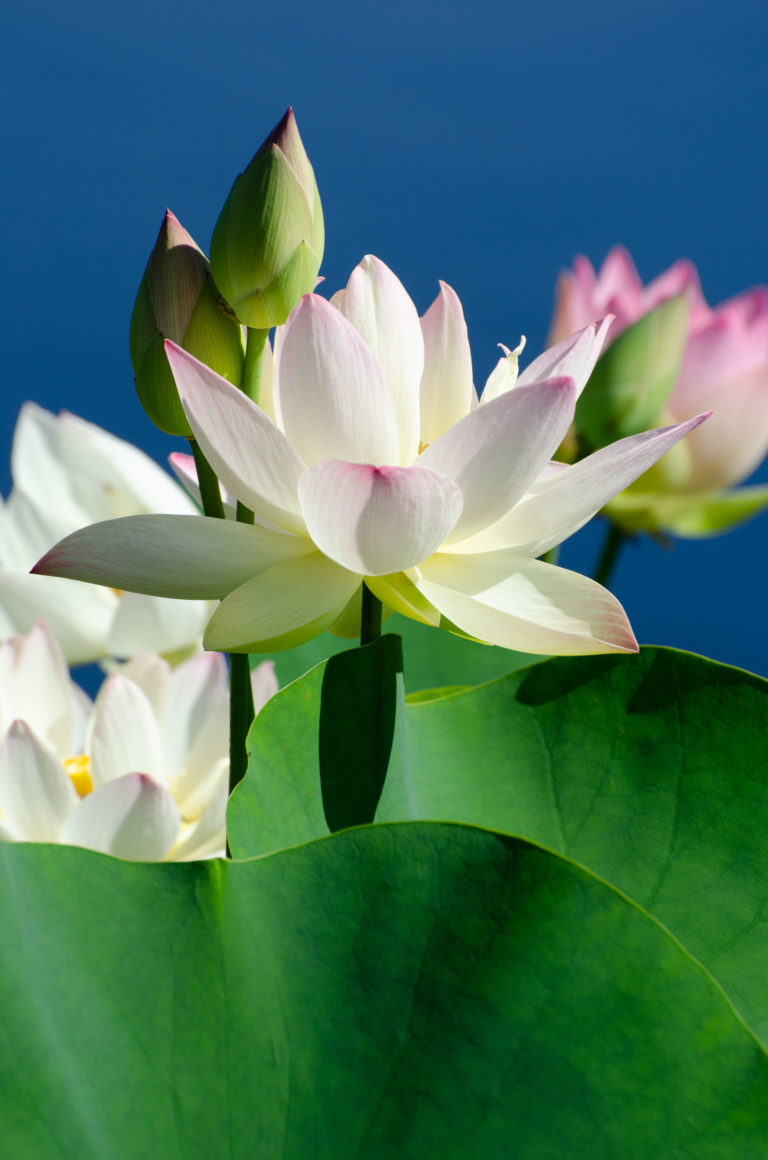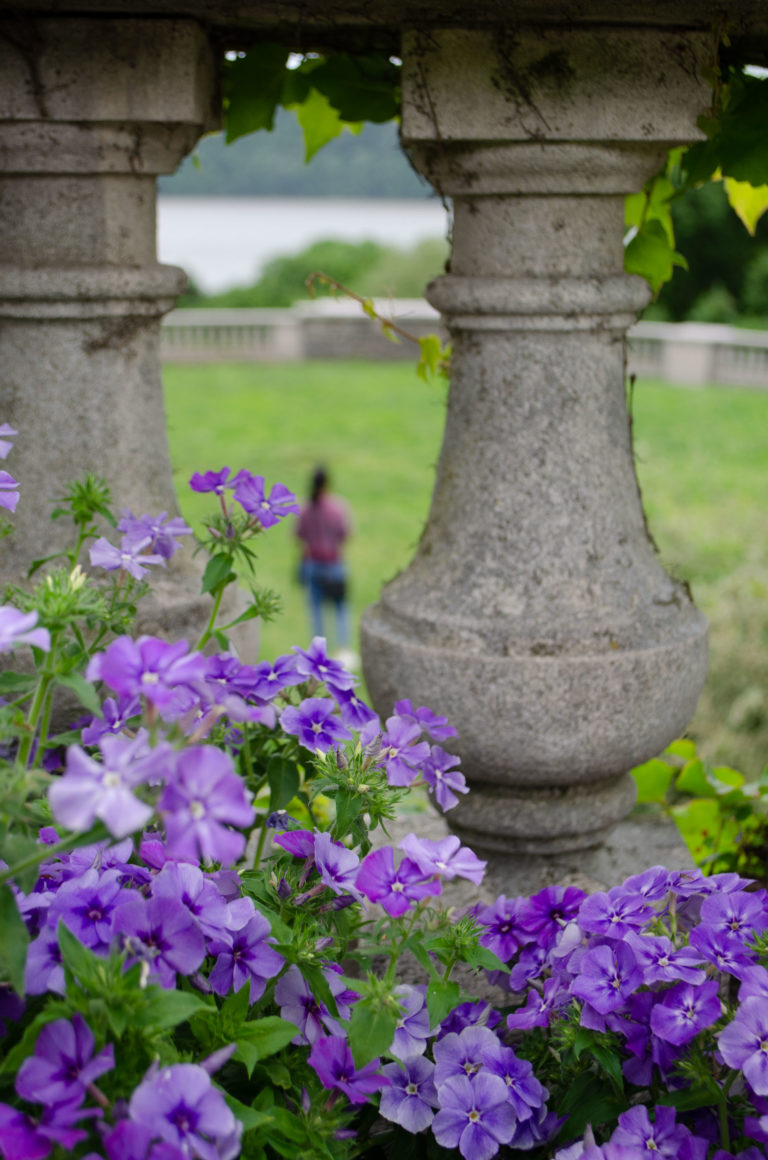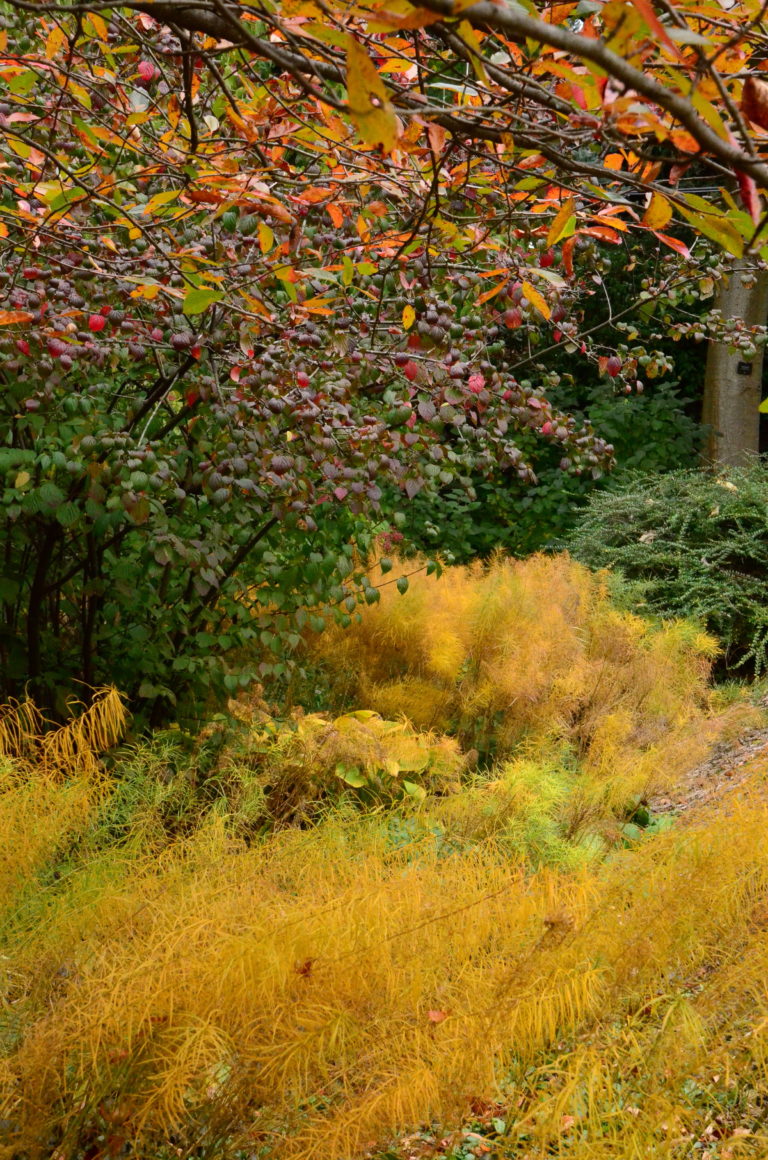
Mexican Plants and Some of Their Very Short Stories
September 27, 2023Many familiar autumn favorites, such as asters, sunflowers, dahlias and salvias, are native to regions of Mexico. Not every species, of course. The New England aster (Symphyotrichum novae-angliae), for example, is native to New England but aromatic aster (Symphyotrichum oblongifolium) has a native range extending through northeastern Mexico. Continuing Wave Hill‘s celebration of National Hispanic Heritage Month and tying into our upcoming, annual Día de los Muertos (Sun, October 29), this article shares some stories about Mexican dahlias, amaranths, echeverias and marigolds. For each plant name, the typical English common name is followed in parenthesis by the name in Nahuatl, the indigenous language of the Aztecs.
I’ve tried my best to collect information for these stories from authentic sources. Special thanks to the library staff at the Hispanic Society Museum & Library in New York City, and all the generous people I learned from during my 2022 trip to Oaxaca, Mexico.

A Story of Preservation: Dahlia (Acocoxóchitl)
Plants growing in present-day Mexico were documented by Spanish conquistadors in 1552 in a codex called An Aztec Herbal. Written in Nahuatl (the indigenous language of the Aztecs) by Martin de la Cruz—a native Mexican who was baptized and given a Christian name—and translated into Latin by Juan Badiano. As part of religious conversion, the Spanish destroyed most Aztec records, thus this one-of-a-kind codex is an invaluable piece of Aztec culture. An Aztec Herbal was rediscovered in 1923; since then, many people have attempted to interpret the material. The contents remain fragmented, yet the genus of many plants is identified.
Today’s showy dahlias, with variable colors and lots of petals, are descendants of tree dahlias. There are multiple species of tree dahlia still grown today—what sets them apart from cultivated dahlias is their height and delicate flowers. Like cultivated dahlias, tree dahlias produce edible underground tubers.


A Story of Exploration: Echeveria (Tememetla)
Plants in the “new world” were only documented if they had potential economic value, their ornamental value was secondary, if considered at all. As the Spanish explored Mexico and other parts of the Americas, they brought along Mexican artists to document plants: Artists could find themselves responsible for more than a hundred new plants on a single botanical expedition.
In the late 1700s, Mexican artist Atanasio Echeverría y Godoy accompanied many expeditions. Echeverría started attending expeditions as a teenager and is credited with hundreds of botanical paintings. His art is still revered to this day for its beauty and botanical accuracy. Particularly impressed by Echeverría’s talents, French botanist Augustin Pyramus de Candolle named the genus Echeveria in his honor.


A story of Food: Amaranth (Aquahuitl)
Amaranth was first cultivated by the Aztecs over 8,000 years ago. During the 1500s, however, amaranth almost disappeared from the Americas due to the eradication of amaranth farms by Spanish conquistadors, persevering only thanks to wild and “backyard” populations. But it wasn’t until the 1970s, during an era of crop research, that amaranth returned as a crop to Mexico. Renewed interest in this protein-packed grain continues to gain traction as it is incorporated into more culinary dishes.
Amaranth is rich in all sorts of good stuff, like protein and fiber. The golden grains can be toasted, boiled, powered into flour or popped. A popular Día de los Muertos treat called alegría (Spanish for joy) mixes popped amaranth with a sticky substance to create skulls, bars and other shapes. Quintonil (Spanish for leafy greens) harvested from amaranth are cooked like any other leafy green: sautéed, blanched or boiled.

A Story of Celebration: Marigold (Cempohualxochitl)
The Nahuatl word cempohualxochitl specifically refers to Tagetes erecta, the large-flower marigold species used in the celebration of Día de los Muertos. Their scent, described as musky, is said to guide the dead back to this earthly realm one night a year and is an important element in the decoration of ofrendas (altars). Many species of marigolds have different medicinal applications and like all of the plants featured in this essay have pre-Hispanic origins and are included in An Aztec Herbal.
There are a lot of plant names used in this essay. English common names (marigold), scientific names (Tagetes erecta) and Nahuatl or indigenous names (cempohualxochitl). A plant may have many names and each one tells only part of its story. Perhaps like me, you may use lexicography as a starting point of exploration or perhaps something else, like its forageable potential. Whatever your starting point, continue to learn the stories of plants: both cultural and non-. I hope you can join us at Wave Hill for Día de los Muertos on Sunday, October 29. Can’t make it? Make sure to visit this autumn, before the arrival of frost, to look for these Hispanic plants and more flowering at Wave Hill this season.

Jess Brey,
Ruth Rea Howell Senior Horticultural Interpreter



